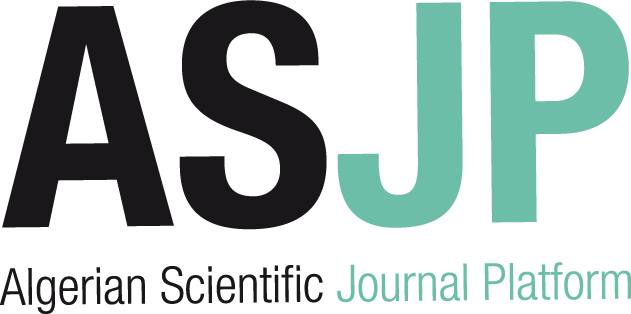[article]
| Titre : |
The mineralogy and crystallography of pyrrhotite from selected nickel and PGE ore deposits |
| Type de document : |
texte imprimé |
| Auteurs : |
Megan Becker, Auteur ; Johan De Villiers, Auteur ; Dee Bradshaw, Auteur |
| Année de publication : |
2011 |
| Article en page(s) : |
pp. 1025-1037 |
| Note générale : |
Economic geology |
| Langues : |
Anglais (eng) |
| Mots-clés : |
Pyrrhotite Mineral chemistry Cristallography |
| Index. décimale : |
553 Géologie économique. Minérographie. Minéraux. Formation et gisements de minerais |
| Résumé : |
The nonstoichiometric sulfide pyrrhotite (Fe(1−x)S) common to many ore deposits occurs in a variety of crystallographic forms and compositions and occasionally is also intergrown with stoichiometric troilite (FeS). In this study, the mineralogy of pyrrhotite derived from several different nickel and PGE ore deposits in South Africa, Botswana, and Canada was examined in detail in terms of pyrrhotite association, crystallography, and mineral chemistry. Pyrrhotite samples were subdivided into two-phase 6C Fe11S12 pyrrhotite intergrown with 2C FeS troilite, two-phase 4C Fe7S8 pyrrhotite intergrown with 5C Fe9S10 pyrrhotite, single-phase 5C Fe9S10 pyrrhotite and single-phase 4C Fe7S8 pyrrhotite. None of the pyrrhotite samples analyzed were classified as two-phase 4C pyrrhotite intergrown with pyrite due to the scarcity of pyrite in these samples. Average solid solution Ni contents of NC pyrrhotite (0.75 ± 0.10 wt % Ni) in this study were found to be greater than in 4C pyrrhotite (0.43 ± 0.10 wt % Ni), but only when the pyrrhotite occurred as two-phase 4C pyrrhotite intergrown with NC pyrrhotite. For single-phase pyrrhotite occurrences in this study, 4C pyrrhotite was more Ni rich (up to 2 wt % Ni) than NC pyrrhotite (0.75 ± 0.19 wt % Ni). The average atomic metal/S ratios obtained for 4C Fe7S8 pyrrhotite was 0.869 ± 0.013 (n = 699), for 5C Fe9S10 pyrrhotite was 0.895 ± 0.013 (n = 316) and for 6C Fe11S12 pyrrhotite was 0.918 ± 0.017 (n = 101). The histogram comparing metal/S ratios of all the pyrrhotite samples analyzed showed a continuum of metal/S ratios, although with frequency maxima corresponding to the ideal compositions of 4C, 5C, and 6C pyrrhotite. The presence of the continuum however, was interpreted to be representative of nonstoichiometry in the pyrrhotite structure. |
| DEWEY : |
553 |
| ISSN : |
0361-0128 |
| En ligne : |
http://econgeol.geoscienceworld.org/content/105/5/1025.abstract |
in Economic geology > Vol. 105 N° 5 (Août 2010) . - pp. 1025-1037
[article] The mineralogy and crystallography of pyrrhotite from selected nickel and PGE ore deposits [texte imprimé] / Megan Becker, Auteur ; Johan De Villiers, Auteur ; Dee Bradshaw, Auteur . - 2011 . - pp. 1025-1037. Economic geology Langues : Anglais ( eng) in Economic geology > Vol. 105 N° 5 (Août 2010) . - pp. 1025-1037
| Mots-clés : |
Pyrrhotite Mineral chemistry Cristallography |
| Index. décimale : |
553 Géologie économique. Minérographie. Minéraux. Formation et gisements de minerais |
| Résumé : |
The nonstoichiometric sulfide pyrrhotite (Fe(1−x)S) common to many ore deposits occurs in a variety of crystallographic forms and compositions and occasionally is also intergrown with stoichiometric troilite (FeS). In this study, the mineralogy of pyrrhotite derived from several different nickel and PGE ore deposits in South Africa, Botswana, and Canada was examined in detail in terms of pyrrhotite association, crystallography, and mineral chemistry. Pyrrhotite samples were subdivided into two-phase 6C Fe11S12 pyrrhotite intergrown with 2C FeS troilite, two-phase 4C Fe7S8 pyrrhotite intergrown with 5C Fe9S10 pyrrhotite, single-phase 5C Fe9S10 pyrrhotite and single-phase 4C Fe7S8 pyrrhotite. None of the pyrrhotite samples analyzed were classified as two-phase 4C pyrrhotite intergrown with pyrite due to the scarcity of pyrite in these samples. Average solid solution Ni contents of NC pyrrhotite (0.75 ± 0.10 wt % Ni) in this study were found to be greater than in 4C pyrrhotite (0.43 ± 0.10 wt % Ni), but only when the pyrrhotite occurred as two-phase 4C pyrrhotite intergrown with NC pyrrhotite. For single-phase pyrrhotite occurrences in this study, 4C pyrrhotite was more Ni rich (up to 2 wt % Ni) than NC pyrrhotite (0.75 ± 0.19 wt % Ni). The average atomic metal/S ratios obtained for 4C Fe7S8 pyrrhotite was 0.869 ± 0.013 (n = 699), for 5C Fe9S10 pyrrhotite was 0.895 ± 0.013 (n = 316) and for 6C Fe11S12 pyrrhotite was 0.918 ± 0.017 (n = 101). The histogram comparing metal/S ratios of all the pyrrhotite samples analyzed showed a continuum of metal/S ratios, although with frequency maxima corresponding to the ideal compositions of 4C, 5C, and 6C pyrrhotite. The presence of the continuum however, was interpreted to be representative of nonstoichiometry in the pyrrhotite structure. |
| DEWEY : |
553 |
| ISSN : |
0361-0128 |
| En ligne : |
http://econgeol.geoscienceworld.org/content/105/5/1025.abstract |
|


 Ajouter le résultat dans votre panier Faire une suggestion Affiner la recherche
Ajouter le résultat dans votre panier Faire une suggestion Affiner la rechercheThe flotation of magnetic and non-magnetic pyrrhotite from selected nickel ore deposits / Megan Becker in Minerals engineering, Vol. 23 N° 11-13 (Octobre 2010)

The mineralogy and crystallography of pyrrhotite from selected nickel and PGE ore deposits / Megan Becker in Economic geology, Vol. 105 N° 5 (Août 2010)











